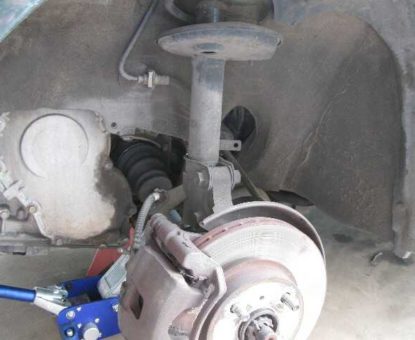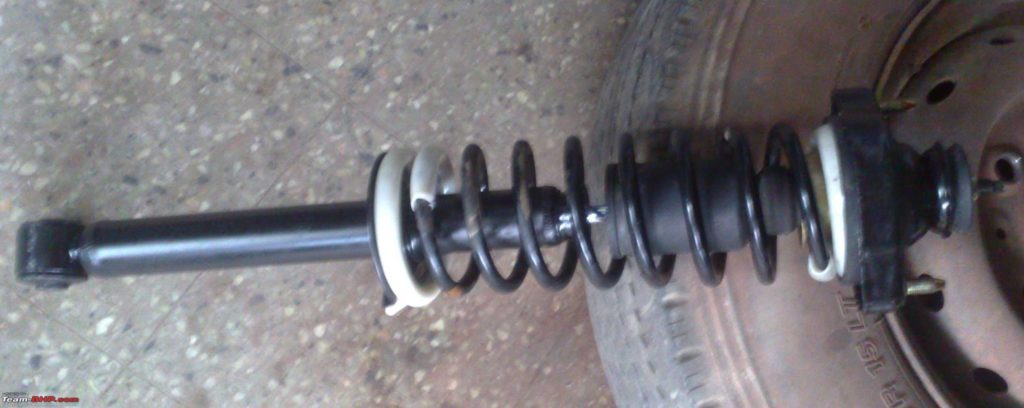Shock absorbers and struts are parts of the vehicle suspension that absorb shocks from the bumps and potholes and keep your vehicle riding smooth and stable. What is the difference between a shock absorbers and a strut? A strut is the shock absorber built into one unit with the coil spring (in the photo). Any car has four struts/shock absorbers; one at each wheel. Most cars and SUVs have struts in the front suspension and shock absorbers or struts in the back.

Front Strut

A Shock Absorber
Struts and shock absorbers are maintenance-free units. Does this mean that they never have to be replaced? A strut or a shock absorber doesn’t need to be replaced unless there is a problem with it or if you just want to upgrade your ride with new shock absorbers. The most common problem with shocks and struts is when they start leaking. See this photo: leaking rear shock absorber. Struts and shock absorbers are filled with oil. If during a regular inspection, your mechanic noticed that a strut or shock absorber is leaking, it must be replaced, as it will stop working without a sufficient level of oil. Sometimes a shock absorber may stop functioning even without visible leaks.
What are the symptoms of a bad shock absorber or strut? Symptoms include bounciness and/or knocking when driving over bumps. You may also notice that your car swings up and down more, like a boat. To pinpoint a weak or failed strut or shock absorber, your mechanic may do a quick “bounce test” where each corner of the vehicle is pushed down and quickly released. The corner with the weak shock absorber will keep bouncing up and down longer, while the corner with the good unit will rebound slowly and will not bounce more than twice.
Another common reason to replace struts is after hitting a major pothole, curb or after an accident. In any of these cases, the strut might be bent, which may not be visible, but can be detected during the wheel alignment. Driving with a failed strut or shock absorber is not safe. In addition, if one shock or strut is not working, there is more load on the other three, which will cause them to fail sooner.
Do you have to replace both shock absorbers or struts if only one is bad? It’s not necessary, but it’s usually recommended to replace them in pairs, for example, both front struts or both rear shocks. This is because a new shock absorber will absorb road bumps better than the old one. If you replace only one shock absorber, it may create “unevenness” from side to side when driving over bumps. However, if your car is not very old, replacing only one strut or shock absorber may be enough, since the opposite side is not worn out yet.
Do coil springs need to be changed when replacing the struts? The answer is no: if the spring is in a good shape, it can be re-used with the new strut.
If one coil spring is bad, is it necessary to replace both? The answer is a bit tricky: coil spring sag over time, so if you put the new spring on one side and leave the old one on the other side, the side with the new spring may ride a bit higher than the opposite side. However, if your car is not very old and you are replacing the broken spring with the OEM part, it might be OK to replace just one. Of course, your mechanic might recommend replacing both springs to keep your suspension “even”, but again, it’s not necessary.
The cost to replace struts can run from $600 to $850 per pair. When struts are replaced, in most cases the wheel alignment must also be performed. The wheel alignment costs from $80 to $150. Replacing struts involves removing the coil springs that are under high tension. For this reason, it’s not something that can be easily done at home as a DIY project. It’s best to trust this job to your mechanic as most repair shops have a special spring compressor tool that can safely assemble or disassemble a loaded strut.
Source: Testingautos
